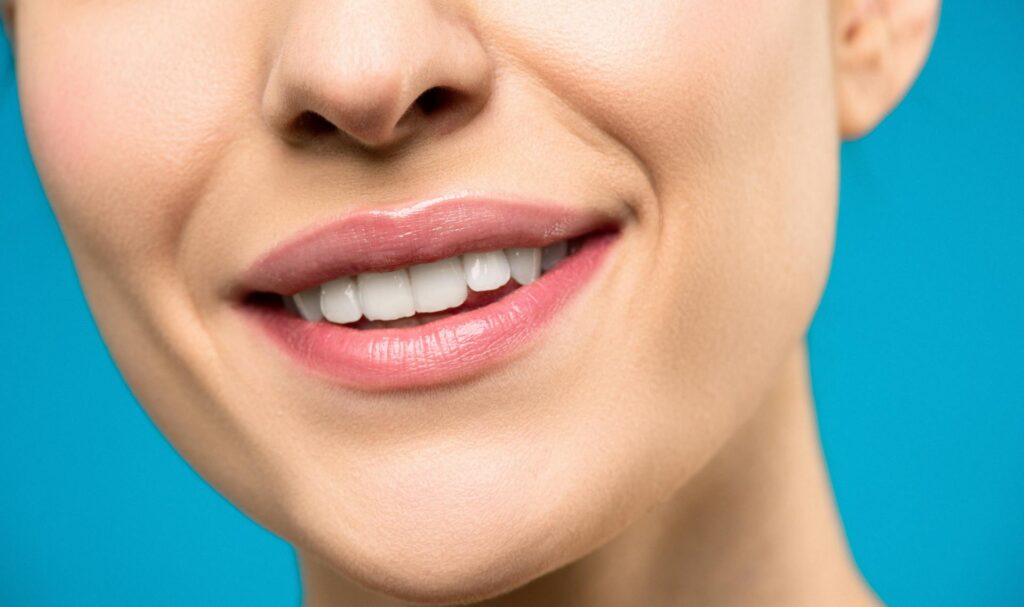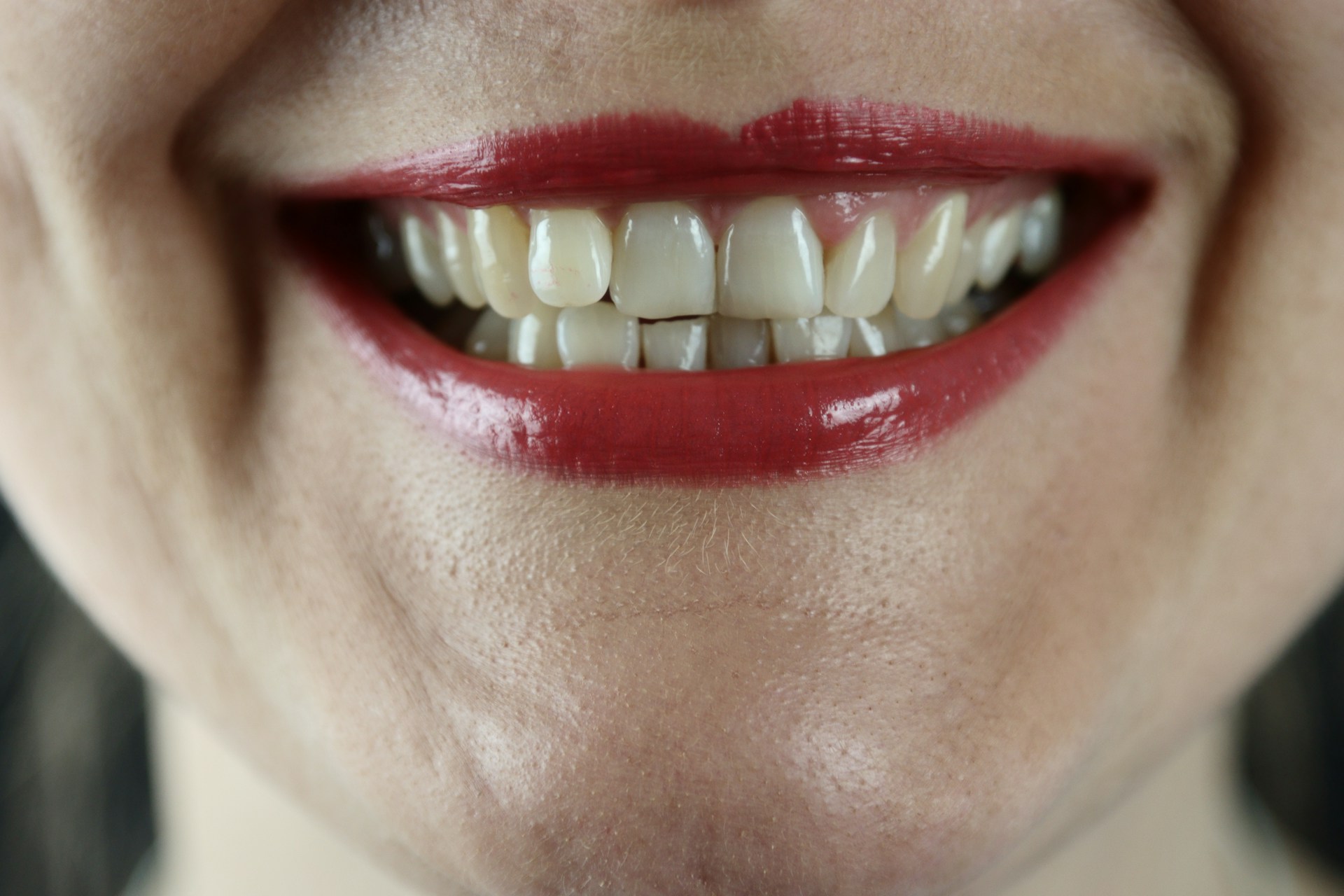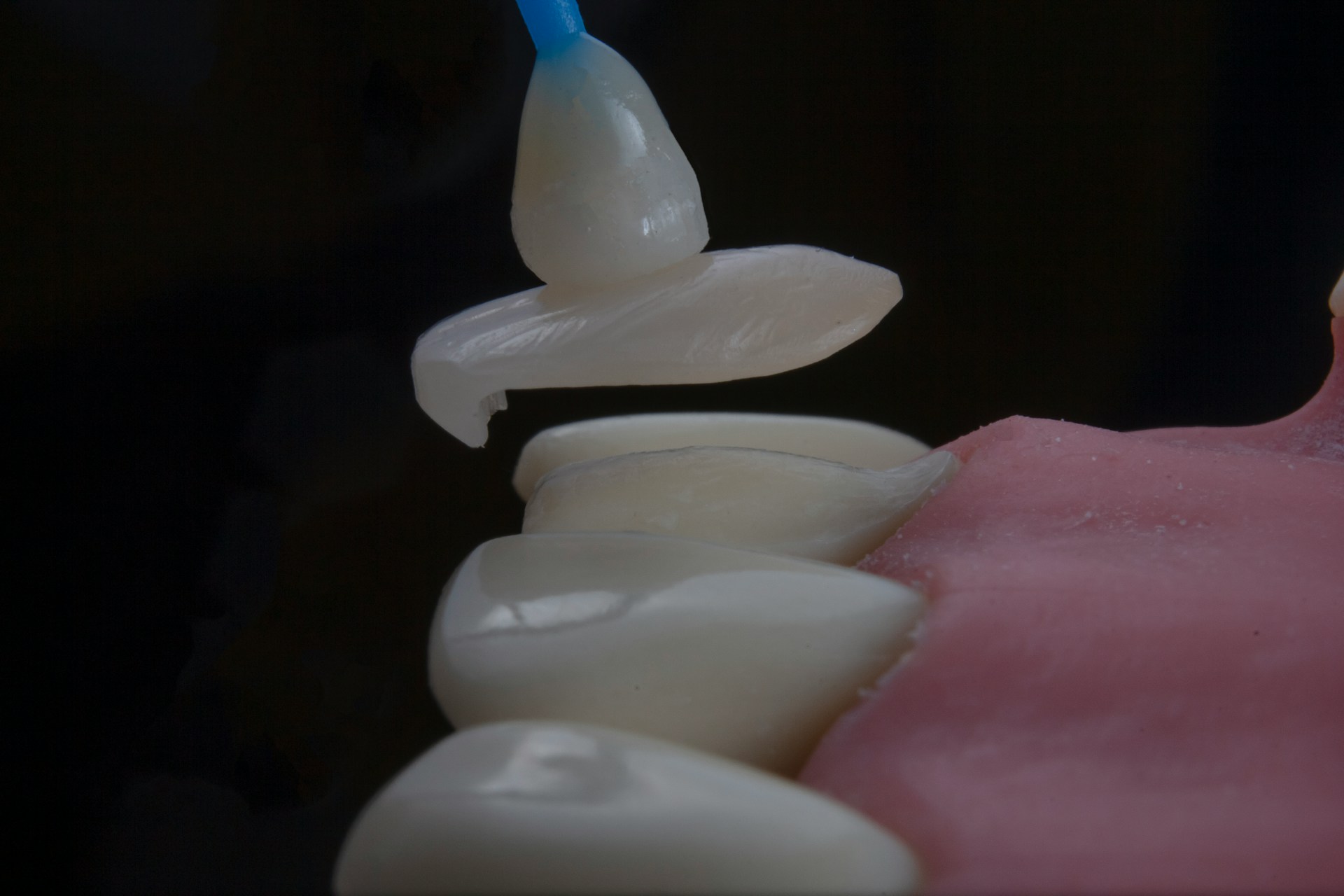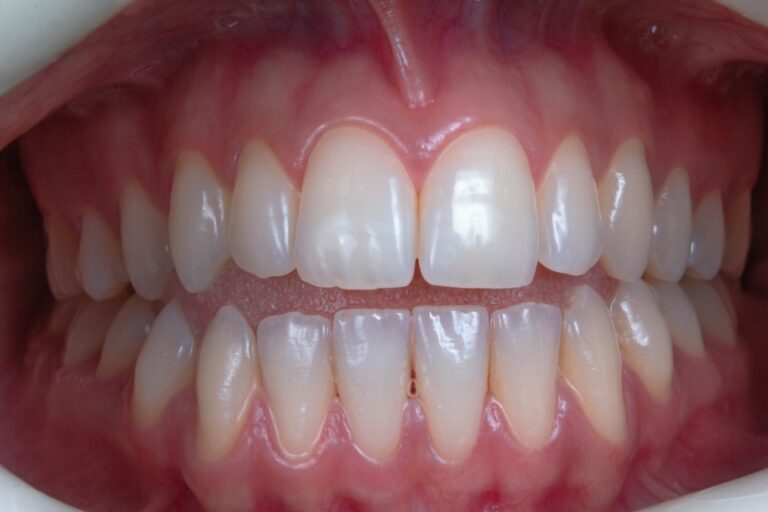
A smile is often one of the first features people notice, making it an essential aspect of our self-image. A smile makeover is a personalised approach designed to enhance dental aesthetics, addressing concerns such as discolouration, crooked teeth, or gaps.
This article will delve into the what is included in a smile makeover, common reasons why individuals seek this type procedure, the different procedures involved, and what to expect regarding duration, recovery, and smile makeover costs. Additionally, it will provide tips on how to select the right cosmetic dentist to help you achieve your ideal smile.
What Is a Smile Makeover?

A smile makeover represents a thorough approach to improving the appearance of one’s smile through a variety of cosmetic dentistry procedures. This transformative journey can include an assortment of treatments tailored to meet individual needs, such as:
- Tooth whitening
- Dental veneers
- Orthodontics
- Gum contouring
The goal is to achieve a harmonious balance between facial aesthetics and oral health. Whether someone is seeking a subtle enhancement or a complete transformation of their smile, having a personalised treatment plan is crucial for achieving the best possible results.
What Are the Common Reasons People Get a Smile Makeover?
Individuals pursue a smile makeover for a variety of reasons, each influenced by their personal aesthetic goals and the desire to enhance their oral health.
Common motivations include:
- Seeking a brighter smile through teeth whitening
- Restoring missing teeth with dental implants
- Correcting crooked teeth through orthodontics
Ultimately, a smile makeover not only improves physical appearance but also plays a significant role in boosting confidence and nurturing a positive self-image.
1. Discolored Teeth
Discoloured teeth are one of the main reasons individuals seek cosmetic procedures such as a smile makeover, as they can have a considerable impact on overall appearance and self-confidence. Various factors contribute to the dullness of teeth, including ageing, dietary habits, and inadequate dental hygiene. This often leads people to explore effective teeth whitening solutions as part of their journey to enhance their smiles.
Moreover, certain medications and habits, such as smoking, can further worsen tooth discolouration, increasing the desire for a brighter smile. Teeth whitening options are quite diverse, ranging from over-the-counter products like whitening strips and toothpaste to professional treatments provided by dentists, which generally offer more significant results.
These treatments not only refresh the look of one’s teeth but also play an essential role within the larger scope of cosmetic dentistry. The pursuit of an ideal smile might involve additional procedures such as veneers, bonding, or aligners, ultimately helping withdividuals in regaining their self-esteem and enhancing their facial aesthetics.
2. Crooked Teeth
Crooked teeth can significantly impact the aesthetics of an individual’s smile and overall oral function, leading many to consider orthodontics as a suitable solution.
Treatments such as braces or Invisalign can effectively correct tooth alignment issues, resulting in an improved smile design and bite correction—both essential elements of a successful smile makeover.
Plus aesthetic concerns, misaligned teeth can contribute to various dental problems, including gum disease and increased wear on enamel. Fortunately, modern orthodontic treatments offer a range of options designed to meet diverse needs and preferences.
Traditional metal braces continue to be a popular choice due to their effectiveness, while ceramic braces provide a more discreet alternative for those who prefer less visibility.
For individuals seeking a nearly invisible solution, clear aligners have become increasingly popular, allowing for comfortable adjustments without the noticeable appearance of metal.
Each option offers distinct benefits, making it easier for individuals to achieve a confident and healthy smile while significantly enhancing their oral health.
3. Missing Teeth
Missing teeth can create both aesthetic and functional challenges, prompting many individuals to explore restorative dentistry options such as dental implants. These innovative solutions not only restore the appearance of a complete smile but also contribute positively to oral health by improving chewing function and jaw alignment. This makes them an essential component of any smile makeover.
The absence of teeth can significantly diminish one’s confidence, often causing individuals to feel self-conscious in social situations or even discouraging them from smiling altogether. This lack of self-assurance can have a ripple effect, impacting personal relationships and professional opportunities. Additionally, missing teeth can lead to complications such as bone degradation and misalignment of the remaining teeth, further complicating oral health.
By choosing dental implants or other restorative procedures, individuals can reclaim not only their smiles but also the ability to savour their favourite foods and communicate with ease. This choice supports not just their appearance but also their overall health and well-being.
4. Gaps Between Teeth
Gaps between teeth can detract from the overall appearance of one’s smile, leading many individuals to explore cosmetic dentistry options such as dental bonding or veneers. These enhancements not only help to close unsightly gaps but also contribute to a more uniform smile, significantly boosting one’s confidence.
Beyond aesthetic improvements, these methods are also important for enhancing dental function and promoting oral health. Dental bonding involves the application of a tooth-coloured resin to fill in gaps, making it a quick and cost-effective solution that is often completed in just one visit.
On the other hand, veneers are thin shells made from porcelain or composite materials that offer a more permanent solution, allowing for greater customisation in terms of colour and shape.
This combination of artistry and technology ensures that individuals seeking a dental transformation receive tailored care, resulting in a new smile that leaves them feeling satisfied and confident.
What Are the Different Procedures Included in a Smile Makeover?

A smile makeover involves a variety of cosmetic procedures designed to improve both the appearance and function of an individual’s smile.
These procedures may include:
- teeth whitening
- dental veneers
- gum contouring
- dental implants
- orthodontics
All these procedures play a vital role in achieving a complete dental transformation. By conducting a thorough smile assessment to evaluate individual needs, dental professionals can develop a comprehensive treatment plan tailored to meet specific aesthetic goals.
1. Teeth Whitening
Teeth whitening has become one of the most sought-after cosmetic procedures for individuals aiming to enhance the brightness of their smile. There are various options available, ranging from in-clinic treatments that utilise laser dentistry to convenient at-home kits, allowing people to choose what best fits their preferences and schedules.
It is important to understand the effectiveness and safety of these methods for anyone considering such treatments. Professional in-clinic procedures often provide quicker and more dramatic results, although they can be pricier. Conversely, at-home whitening kits offer convenience but may take longer to show results and necessitate consistent use.
Moreover, maintaining oral hygiene and care post-treatment is crucial for preserving that newly achieved brightness. Regular brushing, flossing, and routine dental check-ups are not just beneficial; they are essential to prevent discolouration and ensure overall oral health.
2. Dental Veneers
Dental veneers are thin shells made of porcelain or composite resin that are placed over the front surfaces of teeth to improve their appearance. This makes them a popular choice for those looking to enhance their smile. They effectively address concerns such as discolouration and misalignment while helping to create the aesthetically pleasing smile many desire.
The impact of dental veneers extends beyond just cosmetic improvements; they can significantly boost self-confidence and foster a more positive self-image.
The process typically begins with a comprehensive consultation, during which patients can discuss their goals and expectations with a cosmetic dentist. After selecting the right shade and style for their veneers, a small amount of enamel is usually removed to ensure a proper fit.
Once applied, these durable shells can deliver a beautiful, natural-looking smile that enhances facial features and provides long-lasting results, ultimately making them an essential component of contemporary cosmetic dentistry practices.
3. Dental Implants
Dental implants represent an innovative solution for individuals dealing with missing teeth, offering a permanent and natural-looking replacement. These titanium posts are surgically inserted into the jawbone, providing a stable foundation for dental crowns and restoring both the function and aesthetics of a person’s smile.
This advanced procedure not only improves the visual appeal of one’s smile but also plays a crucial role in oral rehabilitation. By addressing the gaps left by tooth loss, dental implants help enhance bite alignment and chewing efficiency, which in turn contributes to better overall oral health.
They also promote bone preservation, counteracting the deterioration that often occurs after losing teeth.
The advantages of dental implants go beyond aesthetics; they also boost confidence and self-esteem, allowing individuals to participate more fully in social interactions. Therefore, dental implants are increasingly recognised as an essential element in comprehensive smile enhancement strategies.
4. Invisalign
Invisalign is a widely recognised orthodontic treatment that utilises a series of clear, removable aligners designed to gradually straighten teeth, all without the need for traditional metal braces. This discreet alternative not only enhances the aesthetics of smiles but also effectively promotes bite correction.
These aligners are crafted for comfort and convenience, custom-made to fit snugly over the teeth. This design allows individuals to maintain their oral hygiene more effectively than with standard braces. Patients appreciate the ability to easily remove the aligners while eating or brushing their teeth, which contributes to a more flexible lifestyle.
The gradual adjustment process is typically viewed as more comfortable, reducing the discomfort often associated with metal wires and brackets. As the aligners gently guide the teeth into their desired positions, individuals often find motivation in witnessing their progress through the clear aligners. This innovative approach to orthodontics proves to be both effective and user-friendly.
5. Dental Bonding
Dental bonding is a highly versatile cosmetic procedure designed to address minor imperfections in teeth, such as chips, gaps, or discolouration. This technique involves the application of a tooth-coloured resin directly to the affected area, resulting in a seamless and natural appearance that enhances the overall aesthetics of one’s smile.
The process begins with the careful selection of a shade that closely matches the natural teeth to ensure a harmonious look. Once the tooth is properly prepared, the dentist skillfully moulds the resin to fill in imperfections, reshape the tooth, or close gaps, ultimately creating a more uniform smile.
One of the notable advantages of dental bonding is its ability to deliver immediate results, often completed within a single visit. Additionally, it represents a cost-effective option compared to other cosmetic treatments, making the enhancement of one’s smile more accessible to a wider range of patients.
Whether addressing chips, uneven teeth, or spaces, dental bonding offers a quick, effective, and aesthetically pleasing solution.
6. Gum Contouring
Gum contouring is a cosmetic procedure aimed at reshaping the gum line to create a more balanced and aesthetically pleasing smile. This treatment addresses concerns such as a gummy smile or uneven gum lines, ultimately improving both facial aesthetics and gum health.
Through the careful sculpting of gum tissue, patients can achieve a more harmonious proportion between their gums and teeth, leading to a boost in confidence that comes with a radiant smile. Often performed in conjunction with other aesthetic dentistry services, gum contouring helps individuals work towards their ideal smile by enhancing the overall balance and symmetry of their facial features.
Beyond its visual benefits, gum contouring can also promote better oral hygiene by creating a gum line that is easier to clean. In the end, this transformative treatment plays a vital role in attaining a beautiful smile that exudes health and vitality.
7. Dental Crowns
Dental crowns are a widely used restorative solution designed to restore damaged or weakened teeth, offering both functional and aesthetic advantages. These custom-made caps not only enhance the appearance of a tooth but also provide essential support and protection, making them a vital part of any smile makeover.
In the field of restorative dentistry, various types of dental crowns are available, including porcelain, ceramic, metal, and resin options. Each type caters to specific dental needs and aesthetic preferences.
- Porcelain crowns are particularly favoured because they closely mimic the natural appearance of teeth, making them an excellent choice for restoring front teeth.
- On the other hand, metal crowns are often selected for their durability and strength, rendering them suitable for back teeth that withstand significant chewing pressure.
The selection of a crown has a considerable impact on the durability and functionality of dental work. Additionally, it plays a crucial role in enhancing one’s overall smile, contributing to a more confident appearance that can positively affect social interactions.
8. Orthodontics
Orthodontics includes a variety of treatment options aimed at correcting issues related to tooth misalignment and bite discrepancies. By utilising braces, clear aligners, or other orthodontic appliances, these treatments enhance not only the aesthetic appeal of one’s smile but also contribute positively to overall dental health through effective bite correction.
This form of dental care plays a crucial role in smile makeovers, ensuring that the final results are both visually attractive and functionally effective. Techniques such as traditional metal braces, ceramic braces, and innovative clear aligners provide different levels of discretion and comfort, allowing individuals to select an option that aligns with their lifestyle and preferences.
Furthermore, treatments may involve the use of palatal expanders or retainers, which assist in achieving optimal alignment over time. Ultimately, a well-aligned smile can significantly enhance one’s self-esteem and confidence while also minimising the risk of dental issues such as wear, decay, and gum disease.
When contemplating a smile design, it becomes evident that orthodontics is an critical aspect of a truly transformative experience.
How Long Does a Smile Makeover Take?

The duration of a smile makeover can vary considerably based on the individual’s specific needs and the complexity of their treatment plan. Several factors, including the number of cosmetic procedures involved, the type of dental technology used, and the patient’s overall dental health, all play a role in determining the timeline for achieving an enhanced smile.
For example, a straightforward teeth whitening session might only take about an hour, while more comprehensive procedures, such as porcelain veneers, could necessitate multiple appointments over several weeks. If orthodontic treatments, like braces or aligners, are required, patients should be prepared for a longer process that can last anywhere from months to years.
The incorporation of advanced dental technology, such as CAD/CAM systems, can help streamline certain parts of the makeover, potentially reducing the overall duration. Ultimately, a personalised treatment plan is essential, as it ensures that each individual receives an optimal approach tailored to their unique circumstances, thereby maximising both the duration and effectiveness of their smile transformation.
What Is the Recovery Process Like for a Smile Makeover?
The recovery process after a smile makeover can vary depending on the specific dental procedures undertaken, but it generally involves essential post-treatment care to promote optimal healing and results. Patients typically receive guidance on maintaining good oral hygiene and may need follow-up consultations to monitor their progress and address any concerns that arise.
Understanding the usual recovery timelines can be quite helpful in setting realistic expectations. For example, individuals who undergo teeth whitening may experience minimal downtime, whereas those receiving dental implants or extensive veneers might require several weeks to heal.
During this recovery period, it is crucial to adhere to prescribed oral hygiene practices. This includes gentle brushing and using antimicrobial mouth rinses, both of which help reduce the risk of infection and encourage healing.
Patients should also be prepared for their dentist to recommend temporary modifications to their diet and activity levels. This approach can facilitate a smoother recovery process, ensuring that their new smile is both beautiful and healthy.
How Much Does a Smile Makeover Cost?
The cost of a smile makeover can vary significantly due to several factors, including the types of cosmetic procedures involved and the pricing structure of the specific dental clinic. During the initial consultation, patients can expect to receive a comprehensive treatment plan that outlines the associated costs, providing clarity on their investment in smile enhancement.
The geographic location of the dental practice is another important factor influencing prices. For instance, practices located in urban centres often charge more, owing to higher overhead expenses. Additionally, the choice of treatments—such as teeth whitening, veneers, bonding, or orthodontics—contributes to the overall budget.
It is essential for prospective patients to consider both the dentist’s expertise and the materials used, as these aspects can significantly impact the quality and longevity of the results.
On average, individuals might anticipate investing anywhere from a few hundred to several thousand pounds, depending on their unique needs and aesthetic goals.
How to Choose the Right Cosmetic Dentist for Your Smile Makeover?

Selecting the right cosmetic dentist for a smile makeover is essential for achieving the desired aesthetic outcomes and ensuring overall patient satisfaction. Important factors to consider include the dentist’s qualifications, their experience with specific cosmetic procedures, and their approach to patient consultations and treatment planning.
Beyond these core criteria, it is advisable to explore the dentist’s credentials further by verifying their board certifications and any specialised training they may have in aesthetic dentistry.
Patient reviews can offer invaluable insights, providing a glimpse into the level of care and the outcomes that previous clients have experienced. Additionally, reviewing before-and-after photographs of past patients can serve as a clear indication of the dentist’s artistic skills and the quality of their work.
By taking these evaluations into account, along with a thorough consultation at a reputable dental clinic, individuals can make a well-informed decision about their cosmetic dental journey.
Frequently Asked Questions
What is a smile makeover?
A smile makeover is a comprehensive cosmetic dental treatment that combines multiple procedures to improve the overall appearance of your smile. It involves various techniques such as teeth whitening, veneers, dental implants, and more to achieve a beautiful and healthy smile.
What is included in a smile makeover?
The procedures included in a smile makeover can vary depending on the individual’s needs. However, some common treatments that are typically included are teeth whitening, porcelain veneers, dental implants, orthodontics, and gum contouring. Your dentist will customise the treatment plan to address your specific concerns and achieve your desired results.
How long does a smile makeover take?
The duration of a smile makeover can vary depending on the complexity of the individual’s case. It can take anywhere from a few weeks to several months to complete the entire treatment. Your dentist will provide you with a timeline during your initial consultation and keep you informed throughout the process.
Will a smile makeover improve my oral health?
Yes, a smile makeover not only enhances the appearance of your smile but also improves your oral health. The procedures involved in a smile makeover can fix issues like misaligned teeth, gaps, and missing teeth, which can lead to long-term oral health problems. It can also improve the function of your teeth, making it easier to chew and speak properly.
How much does a smile makeover cost?
The cost of a smile makeover can vary depending on the procedures included in the treatment plan. Each individual’s case is unique, and the cost will depend on their specific needs and goals. It is best to consult with your dentist and discuss your budget and payment options.
Are there any risks associated with a smile makeover?
Like any dental procedure, there can be some risks associated with a smile makeover. However, these risks are minimal and can be avoided by choosing a skilled and experienced cosmetic dentist. Your dentist will thoroughly evaluate your oral health and discuss any potential risks with you before starting the treatment.






